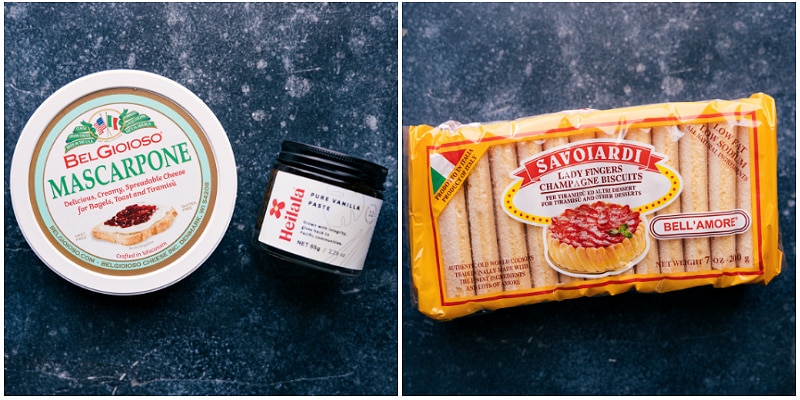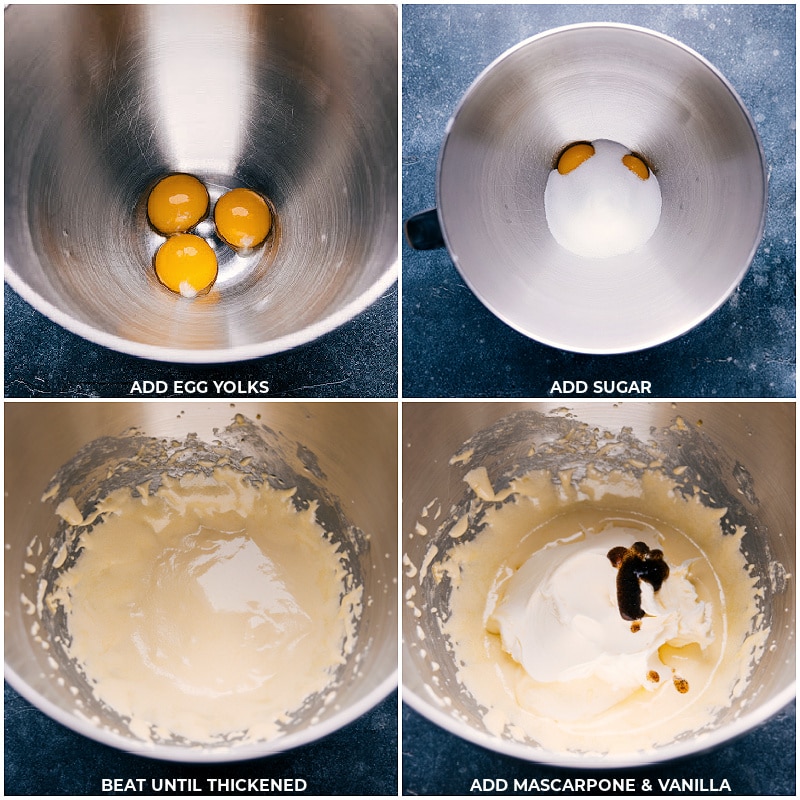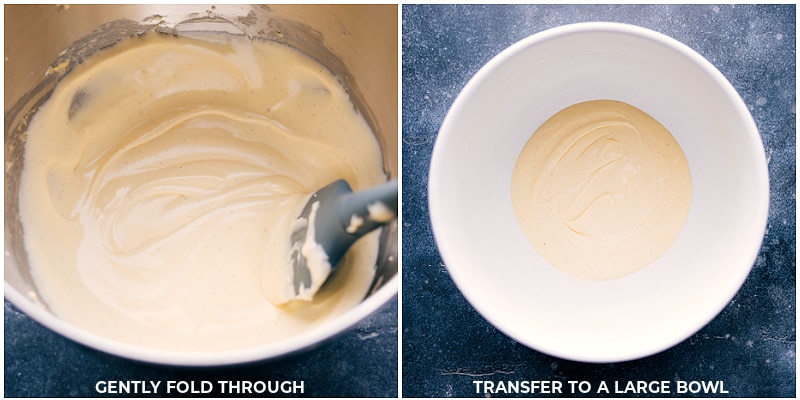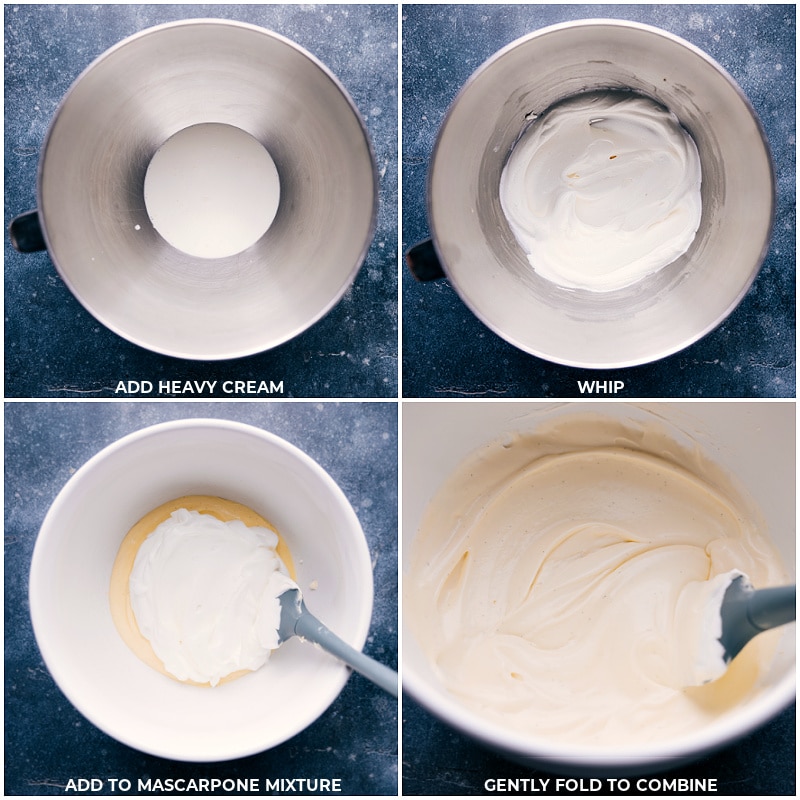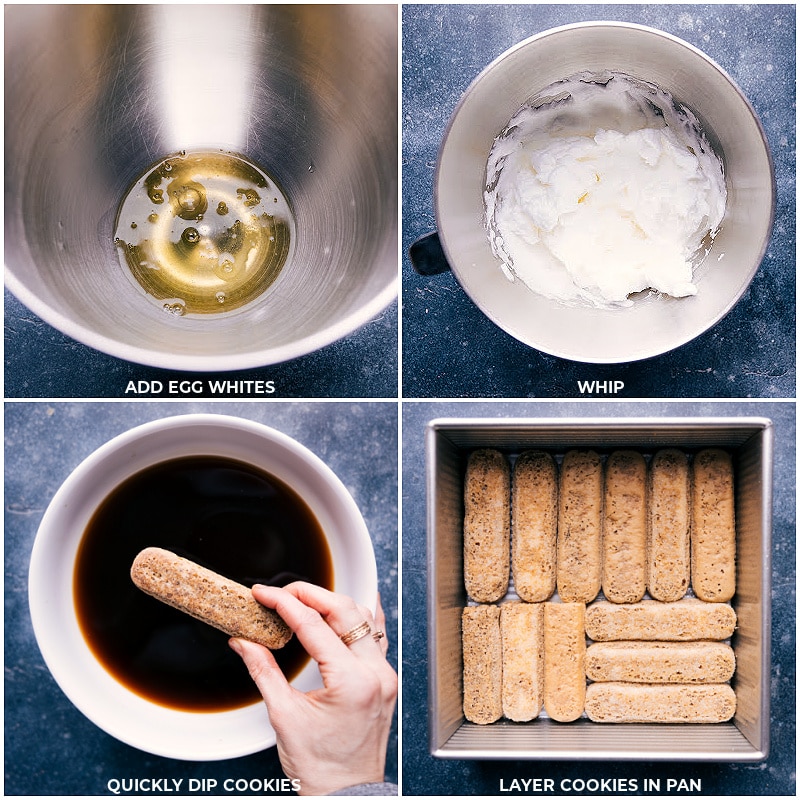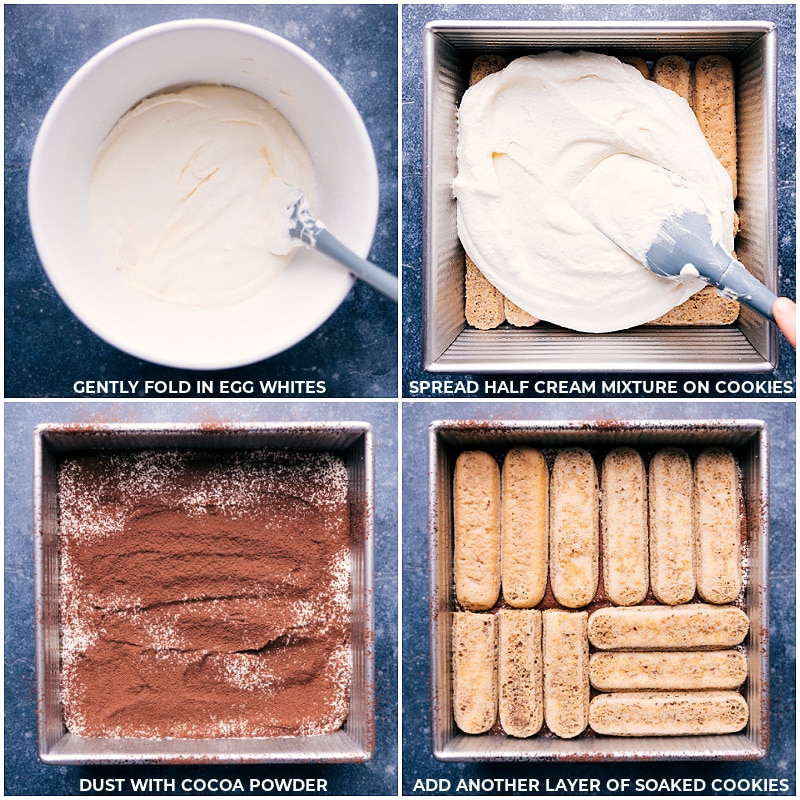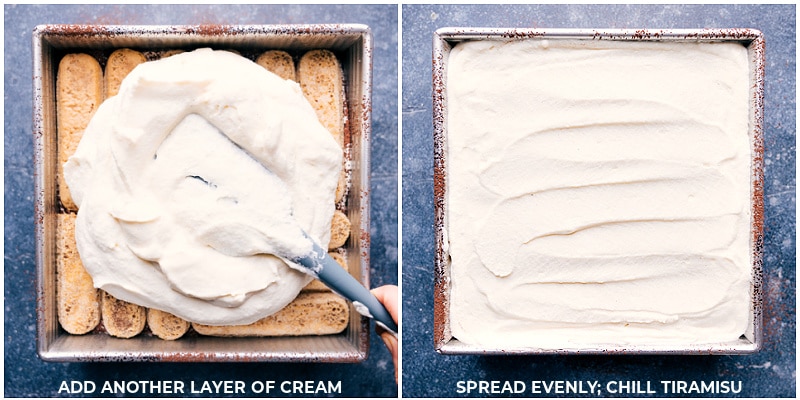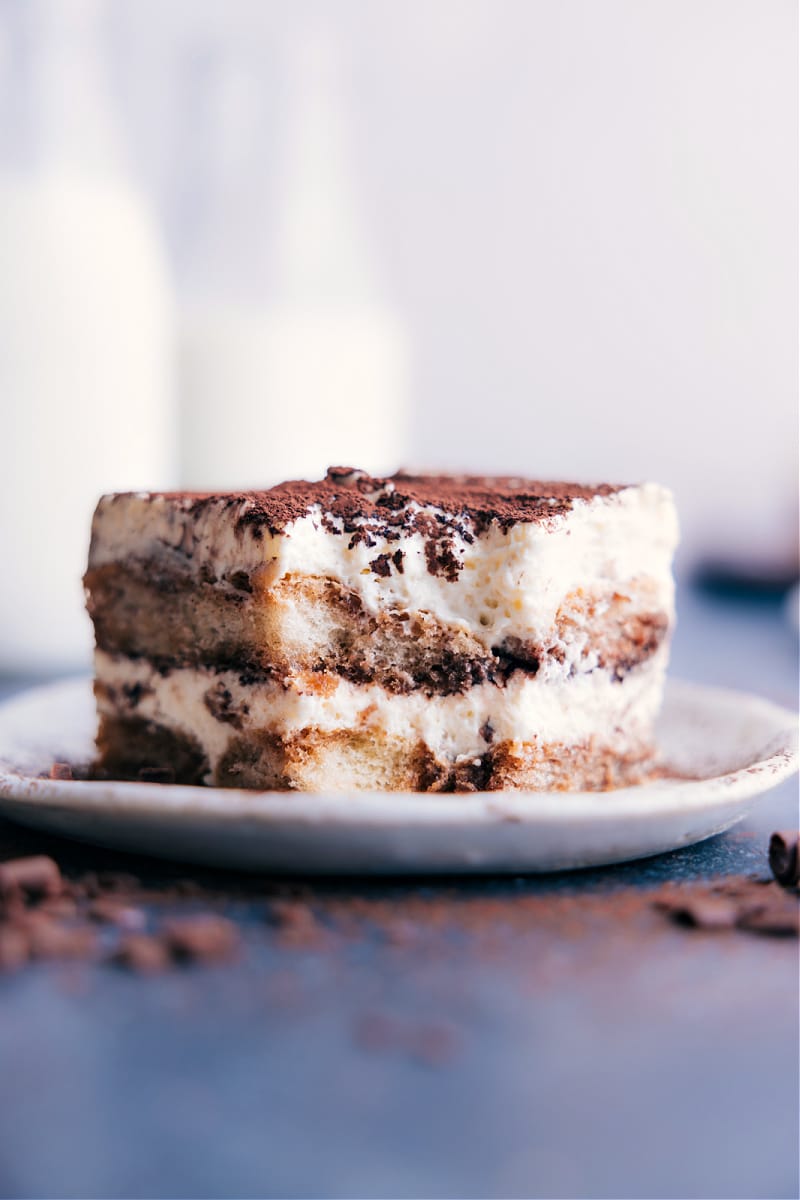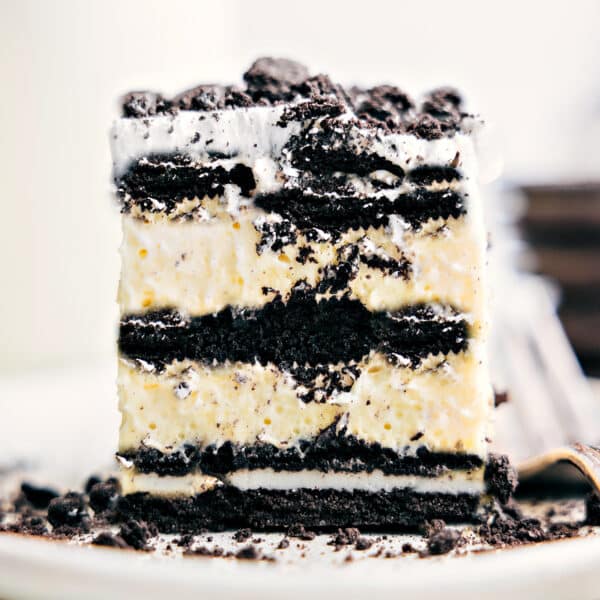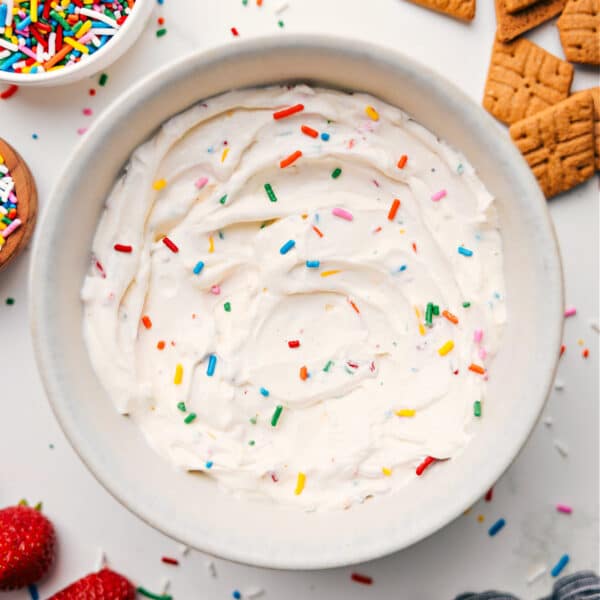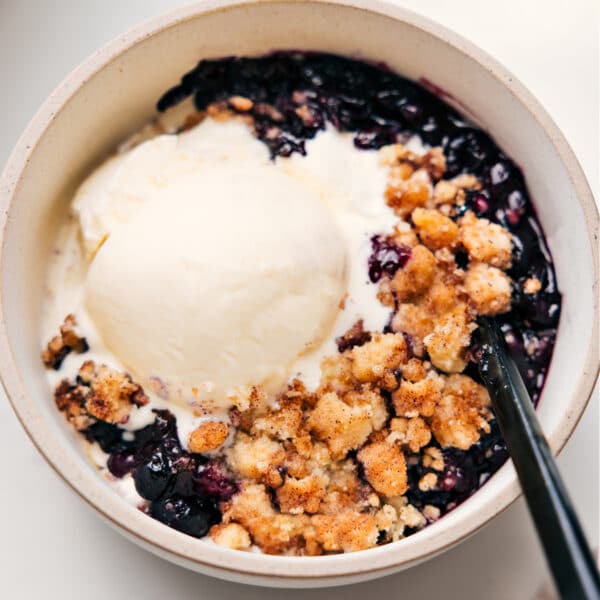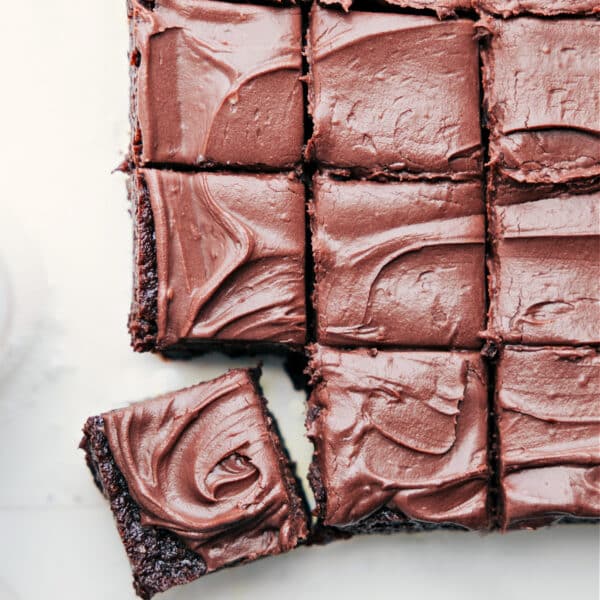Tiramisu is a coffee-infused Italian dessert made with ladyfingers dipped in coffee and layered with a whipped mascarpone and egg mixture. Tiramisu is topped with cocoa and is an absolutely stunning dessert!
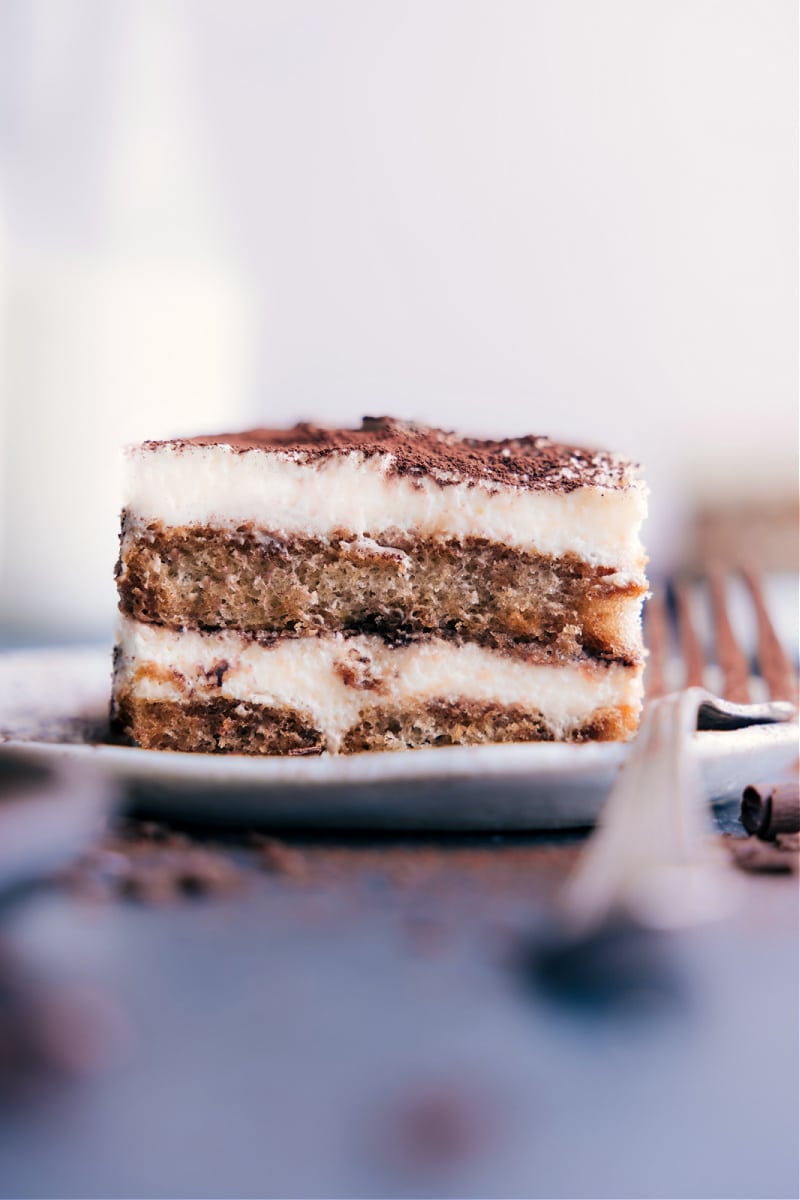
The Perfect Tiramisu Recipe
I’ve shared quite a few recipes from our time in Italy and from the cooking classes we took, yet I’ve failed to share one of the most iconic desserts — Tiramisu. This dessert is one of my all-time favorites and I ordered it at every chance in Italy. And finally, it’s getting the spotlight today!
While this recipe is fairly authentic (and closely based off a recipe we were given in a cooking class), I have adapted it a bit by adding in some whipped cream (which isn’t in the traditional recipe). The cream adds just a bit more to the mascarpone-egg mixture in ways of flavor and texture. You can certainly leave it out for a more traditional recipe, but now that I’ve had it, I can’t make it without this addition!
Quick Tip
Browse through some of the Italian recipes we made in the cooking classes while visiting — this Bruschetta, Apple Fennel Salad, Pepperoni Saporiti, Gelato, and Beef Ragu.
Let’s start with concerns about eating this dessert since it does contain raw eggs:
Is Tiramisu Safe To Eat?
Authentic Tiramisu has always been made with raw eggs (and in our cooking class, Nonna Ciana dramatically shook her rolling pin when asked if the eggs needed to be tempered — “Never!” She insisted).
However, as the recipe migrated across the world in years past, concerns of safety arose and many people started to adapt the recipe by tempering the eggs over a water bath.
With the safety standards of most of today’s mainstream stores, raw pasteurized eggs aren’t a huge risk or concern for most people*. In fact, if you’ve ever enjoyed tiramisu or chocolate mousse in a restaurant, a spoonful of raw cookie dough, or perhaps a homemade creamy sauce or mayo, you’ve consumed raw eggs.
*The risk to healthy adults is fairly low, but it is recommended that pregnant women, individuals with health concerns, or young children avoid foods made with raw eggs.
What Is Tiramisu Supposed To Taste Like?
There are so many contrasting, yet beautifully complementary flavors going on in this dessert–which is probably why it is such a unique and popular dessert!
We’ve got the dark unsweetened cocoa, rum, and black coffee, all contrasted with a light, creamy, and sweet mascarpone cream layer. The sponge-like texture of the ladyfingers allow the cookies to absorb the coffee and infuse a lovely flavor throughout.
Overall, you get a sweet and creamy coffee flavor: the cream has an ultra-smooth mouthfeel and the coffee-infused ladyfingers soften to the perfect cake-like consistency (just like an icebox cake!).
Quick Tip
Is Tiramisu supposed to be soggy? No, it is not intended to taste at all soggy, but the cookies are supposed to soften to a cake-like consistency. The coffee dip and cream layers soften the cookies replacing the crispness with a sponge-like cake texture.
Several ingredients worth discussing in further detail below:
What Is In Tiramisu?
- Espresso powder: We love using this espresso powder to get the strong flavor we dip the cookies in. Add leftover powder (a teaspoon or two) into your favorite chocolate dessert recipes (like this Chocolate Cake Recipe or Brownie Recipe) to enhance the chocolate flavor without it tasting like coffee!
- Ladyfingers: Your local grocery store may carry these cookies, but I’ve never had any luck! We order them online — we’ve tried these, these, and these.
- Mascarpone cheese: It’s similar to cream cheese but uses a base of whole cream rather than milk (so you know this is going to be good!). There isn’t a substitute that will work here. Avoid any low-fat versions which are likely to make the cream layer runny.
- Heavy cream: As mentioned earlier, I like to add whipped cream to the egg + mascarpone mixture. Admittedly this is not in an Italian classic Tiramisu recipe. This recipe is still delicious without the cream, so you can leave it out if desired. So why do I add it in? I’ve made it both ways and tasted side by side. I personally love what the cream adds. It delivers a slightly thicker layer with a rich creamy sweetness that only further emphasizes the richness of the egg + mascarpone mix. The cream makes this dessert deeply indulgent tasting!
There are four main parts of this recipe to prepare and then it’s all about assembly! Here’s a quick breakdown:
How To Make Tiramisu
- Prepare the egg yolks + mascarpone mixture. We’ll be using the stand mixer for these three mixtures, starting with beating together the egg yolks and sugar. Once this mixture is thickened, gently fold in the mascarpone and vanilla.
- Prepare the cream layer. Use the stand mixer again to beat the cream to medium peaks. This means the peaks aren’t fully stiff, but aren’t falling over completely either. Here’s a helpful graphic!
- Whip the egg whites. Last, but not least, whip the egg whites with some salt until foamy. Fold this mixture gently (to retain the air) into the cream mixture.
- Prepare the coffee + ladyfinger layer. Use a wide shallow bowl that can fit the full ladyfinger in the bowl for optimal dipping. The cookie gets a very quick dunk and is then layered into the pan and topped with the cream layer.
Recipe Tips
- Dip the cookies very briefly — we don’t want to soak them at all or it will make the entire Tiramisu soggy.
- Mascarpone temperature. If it is too warm, the marscapone will likely curdle in this recipe. On the flip side, if it is too cold it won’t integrate as nicely. I take it out of the fridge when starting to work on this recipe so that it reaches the proper temperature.
- Don’t over-beat the cream. Medium peaks are defined as not soft peaks, but not stiff. It’s right in between which will yield the perfect consistency.
Tiramisu FAQs
What is Tiramisu?
Tiramisu is an Italian, coffee-flavored dessert layered with coffee-soaked cookies (ladyfingers) and a creamy mascarpone mixture.
Will Tiramisu keep you awake?
One slice of tiramisu is most likely not enough caffeine to keep you up at night. Tiramisu is spiked with just a touch of espresso, and especially if you’re only enjoying one slice, it’s not very much.
Does all Tiramisu have coffee?
Yes, coffee gives tiramisu its signature flavor. The name ‘tiramisu’ actually means ‘cheer me up,’ which is exactly what the espresso-soaked ladyfingers are meant to do!
Why is Tiramisu so soft?
The cookies are supposed to soften fully to a cake-like consistency.
That said, if it is runny or liquid, it’s likely due to one of the following reasons:
- Using low-fat or low-quality mascarpone cheese
- Over-beating the mixtures, which can create separation and seepage
- Over-saturating the ladyfingers
Storage
Storage
Tiramisu is a moist dish that is particularly sensitive to temperature because of the cream layer. Promptly return any leftovers, tightly covered, to the fridge consume within 3-4 days. You can freeze it, but because of the dairy in it it is prone to weeping or separation upon being thawed.
Quick Tip
Serving up Tiramisu
Use a sharp knife for cutting slices. I like to run the knife under hot water, quickly dry it off, and then make a cut. Repeat for each cut.
More Dessert Recipes:
- Tuxedo Creme Brulee recipe from a restaurant I used to work at!
- Easy Chocolate Fondue with fun dipping ideas
- Rocky Road Cookies with peanuts and marshmallows!
- Cheesecake Bars with a graham cracker crust
- Coconut Cream Pie with whipped cream topping
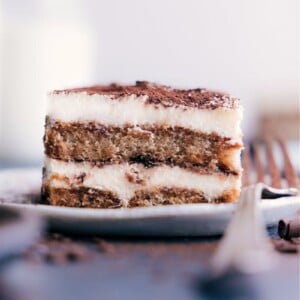
Tiramisu
Equipment
Ingredients
- 1/4 cup + 1 tablespoon instant espresso powder see note 1
- Cooking spray
- 3 large pasteurized eggs at room temperature, divided
- 1/2 cup granulated sugar
- 1 (8-ounce) container mascarpone cheese see note 2
- 1-1/4 teaspoon vanilla extract or 1 teaspoon vanilla paste
- 3/4 cups heavy cream cold
- 1/8 teaspoon salt
- 3 tablespoons coffee liqueur or dark rum or brandy; skip for alcohol-free
- 1 (7-ounce) package ladyfingers savoiardi or pavesini, see note 3
- 1 tablespoon Dutch process cocoa powder divided
Instructions
- Make espresso mixture (see note 1). Set coffee mixture aside in a shallow bowl that has room to dip the entire cookie at once. Lightly grease an 8x8-inch pan with cooking spray; set aside. Separate 3 eggs—yolks from whites. Add yolks to a bowl attached to a stand mixer and whites to a separate bowl for now. Take mascarpone out of the fridge.
- Pour sugar on top of egg yolks. Attach whisk attachment and beat at high speed 6 for 10 minutes or until its color changes to a very light (almost white) yellow and becomes thick. Scrape sides occasionally as needed. Turn off mixer, then use a spatula to scrape in all the mascarpone. Add vanilla. Beat on low speed just until combined and smooth. Use a spatula to scrape all this mixture to a separate, very large bowl.
- No need to clean out stand mixer bowl or whisk yet. To the stand mixer bowl, add in heavy cream (cold—straight from the fridge) and beat, still with whisk attachment, at high speed 6 for 3 minutes or until medium peaks form (not soft but not stiff—here's a helpful graphic). Be careful to not overbeat. Use a spatula to gently mix cream into egg yolk mixture. Now wash out stand mixer bowl and whisk and thoroughly dry both.
- Add egg whites and salt to stand mixer bowl. Beat on high speed 6 until eggs are stiff, bright white, and foamy, about 2–3 minutes. Add 1/2 the egg whites to the cream mixture and very gently fold into the mixture with a spatula. When mostly incorporated, add remaining egg whites and again, very gently fold egg whites into the mixture to combine.
- If using, add in the liquor to the coffee and stir. Very quickly dip one cookie at a time in the mixture (don’t soak at all!), then line the base of the pan with cookies, breaking cookies apart to fit if needed.
- Spread half the cream mixture on top. Sift 1/2 tablespoon cocoa powder through a fine-mesh sieve on top. Then repeat—cookies dipped in coffee followed by the remaining cream mixture. Cover tightly with plastic wrap and place in the fridge for 6–8 hours, preferably overnight.
- Right before serving, sprinkle remaining 1/2 tablespoon cocoa powder on top through a fine mesh sieve. Cut into pieces, serve, and enjoy! (To get clean cuts, use a sharp knife. Run the knife under hot water, quickly dry it off, and make a cut. Repeat for each cut.)
Video
Recipe Notes
Nutrition
Nutrition information is automatically calculated, so should only be used as an approximation.
